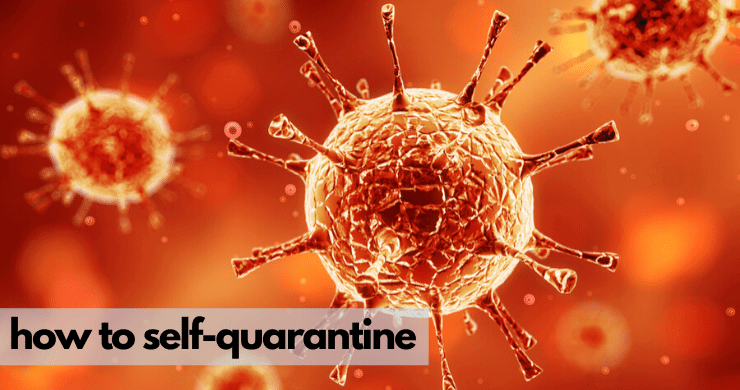Only the introverts are excited about this self-quarantine and isolation, and maybe a few people who DON’T have kids. But, bottom-line, self-quarantine could be coming to your neighborhood.
First and foremost – if you’ve been asked to self-isolate because of your own exposure to Covid-19, do that. The self-isolation isn’t just to protect you – it is to protect the community around you.
We’ve put together some tips and links to help you.
*DISCLAIMER: We are not medical experts, and nothing here should be construed as medical advice. Follow the instructions of your doctor and health departments. Our goal is provide access to quality information that can help you and your family.
Next, Don’t be this guy and spread risk of infection by breaking quarantine.
If your symptoms are mild and you have no other conditions avoid the emergency room
You have to think about
- separation from your family or housemates
- your own personal hygiene (lots of hand washing)
- regular surface disinfection including (but not limited to):
- knobs
- light switches
- counters
- faucets
- monitoring health
Separation
If you have a positive test result, or you’re experiencing symptoms and no one else in your family is. It means you should to self isolate in another room, if possible, to keep your germs to yourself and prevent illness in others.
Have care items that are designated for that self-quarantine room. Don’t bring items out that are being used in that room. Think thermometer, boxes of tissue, etc. You don’t want to go to all the trouble of isolation and then drag the germs back through the house.
Personal Hygiene
If you’re infected, coughing, or sneezing – you should be wearing a mask in your home or in the car when others are present.
Sick or not, you should wash your hand regularly. And even more so if caring for a sick person. If possible keep sick using one bathroom and well people using another.
Keep your hands off your face, out of your eyes, nose, and mouth.
Sanitation and Disinfection
Learn how to properly sanitize those surfaces, too. Surfaces often need to be wet for a few minutes before they are actually disinfected. Here are recommendations from the CDC on cleaners – regular diluted household bleach is on the list. FOLLOW LABEL INSTRUCTIONS. (Note: In our area our Poison Control line has had too many cases already of illness because of sanitizing cleaners) It’s also worth noting that not all sanitizers are food safe. So after cleaning and disinfecting – you may need to clean again for food prep.
“Be sure to read the label directions carefully, as there may be a separate procedure for using the product as a cleaner or as a disinfectant. Disinfection usually requires the product to remain on the surface for a certain period of time (e.g., letting it stand for 3 to 5 minutes).
Use disinfecting wipes on electronic items that are touched often, such as phones and computers. Pay close attention to the directions for using disinfecting wipes. It may be necessary to use more than one wipe to keep the surface wet for the stated length of contact time. Make sure that the electronics can withstand the use of liquids for cleaning and disinfecting.”
https://www.cdc.gov/flu/school/cleaning.htm
Clean that cell phone, too.
This article talks about sanitizing your cell phone – another germ filled surface.
Monitoring
You or a family member should track your temperatures and overall health. Do call your doctor if things get worse.
What about your children?
In the referenced article – they didn’t address if the children are well and you aren’t; but as a parent, you may want to think about how the children can have access to food and snacks if you’re the one who is ill. The good news is children seem to have milder versions.
It’s not likely that internet services will go out but how will you entertain yourself and the children until the event passes? Board games, crafts, projects to keep everyone busy.
Do your best to prepare now – so you don’t have to panic later.
“It may sound like a vacation from reality, an ideal time to binge on Netflix and catch up on sleep. In fact, it’s not easy to lock yourself away from family and friends. There are practical and logistical challenges, and yawning gaps in the official advice that make it even harder.”
Read More About Self Quarantine here: https://www.nytimes.com/2020/03/06/health/self-quarantine-coronavirus.html
